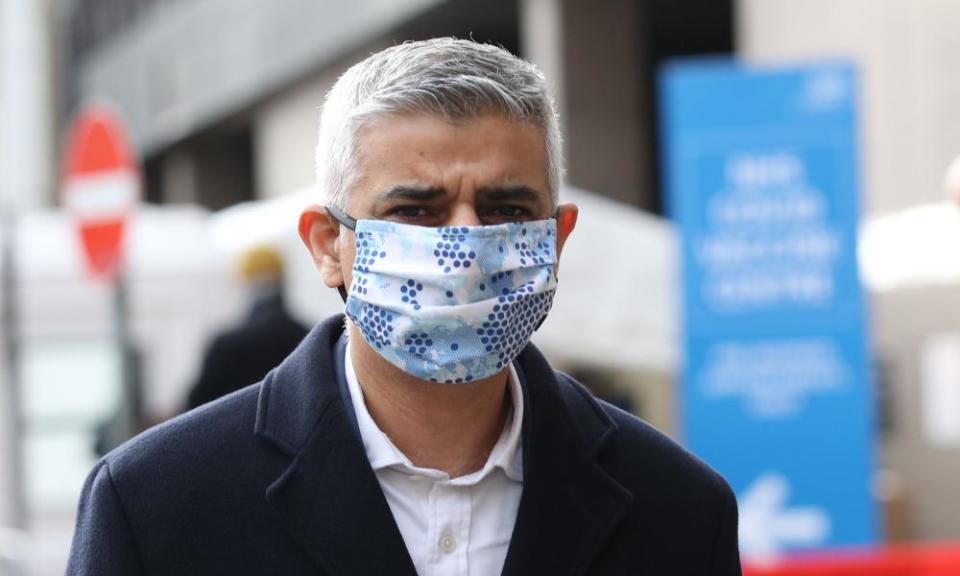Sadiq Khan: London missed out on early share of vaccine

A simplistic formula used to distribute coronavirus vaccines that did not take into account the size of GP practices has meant fewer people receiving one in London, according to the mayor, Sadiq Khan.
While areas such as Slough and Newcastle have successfully immunised 100% of their elderly care home residents, London is lagging behind in the vaccine race even as cases remain among the highest in the country.
GP practices there were supplied similar amounts of the Pfizer and Oxford/AstraZeneca vaccines as elsewhere without taking into account the number of registered patients, it is understood. City Hall sources said that GP networks in London tended to be larger, meaning there were fewer doses per patient. But ministers had acknowledged the error, and the mistake was being corrected, they added.
Figures from NHS England showed that London had the lowest number of people – 388,437 – who had received at least one dose of a Covid vaccine despite being one of the largest NHS regions in England with a population of nearly 9 million.
The leading English region, the Midlands, had administered 713,602 first doses to its population of 10.6 million. People in north-east England and Yorkshire, whose population is similar to London’s at 8.6 million, had received 633,837 first doses.
On Monday alone the number of people being immunised in London was the second lowest in England, at 21,228, with only the south-west lower at 16,612. The Midlands achieved 32,560 and the north-east 23,153.
default
Khan told the Guardian that “the government’s original distribution formula meant that London missed out on its early fair share of the vaccine”. He said that he had been told the supply model would be swiftly revised after a crisis meeting with vaccines minister Nadhim Zahawi last week.
“Zahawi has assured me that supply and distribution will increase, and an amount of the vaccine that reflects our size, density and the level of need in our city is delivered,” the mayor said. “It’s absolutely vital that vulnerable Londoners are given access to the life-saving vaccines as quickly as possible.”
Downing Street struggled to explain the regional differences in vaccination rates, insisting on Tuesday that all areas “have had full access to supply”. The prime minister’s spokesperson also confirmed that places lagging behind would be offered extra vaccine stocks.
“We will put more supplies into the areas that have more to do,” Boris Johnson’s spokesperson said, adding: “Some areas have had different logistical challenges than others.”
Other factors are constraining vaccination rates in London, including what City Hall said are “higher levels of hesitancy” about taking the jab, in particular among the capital’s black, Asian and minority ethnic population. Research has shown that up to 72% of black people said they were unlikely or very unlikely to have the jab.
Across the UK, 4.26m jabs have been administered, putting the country ahead of much of the rest of the world.
But GPs in England have said their ability to provide inoculations is dependent on central supply from the NHS. At times appointments have had to be cancelled at short notice when deliveries failed to materialise – and as recently as last week some areas had not received any doses of the vaccine, although NHS sources said this had now been corrected.
Ministers want to inoculate the first four priority groups by mid February, comprising care home residents, the over-70s, NHS and care workers, and those with serious underlying health conditions. This week the government said it had begun writing to those in their 70s inviting them to be vaccinated.
Later, however, the Department of Health and Social Care said Zahawi did not give any commitments to revise the distribution formula for the vaccine. “Vaccines are being distributed fairly across the UK – including London – to ensure the most vulnerable are immunised first, and all GPs will continue to receive deliveries as planned,” it said.
More GP practices would start immunising people in the next few days, the spokesperson added.

 Yahoo Finance
Yahoo Finance 